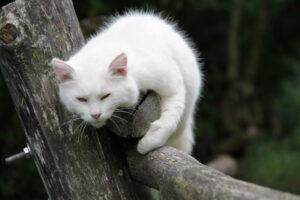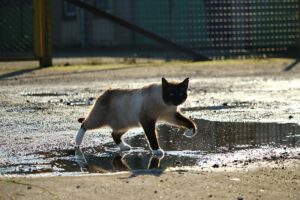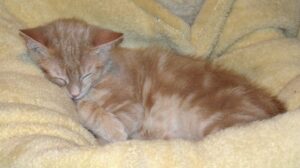How Long Can Wet Cat Food Sit Out ?

How Long Can Wet Cat Food Sit Out :- A feline’s dining preferences can be quite unpredictable, and many cat guardians have undoubtedly encountered the scene of an unfinished food bowl or a partially consumed meal. While it may suggest that your cat has satisfied its hunger, more often than not, they might revisit the feast later in the day, seeking another serving. This prompts the query: What’s the optimal duration for leaving cat food out? In this piece, Whiskas delves into the timing of when you should extend the dining window for your cat’s food and when it’s advisable to tidy it up.
You unseal a new can of cat food, tip its contents into the feline dish, and present it to your kitty for a delightful feast. With contentment evident in a few nibbles, your cat, however, becomes distracted and leisurely strolls away.
Now the question arises: How much time is acceptable for wet cat food to remain untouched? Can you leave the moist cat food in the dish for a later indulgence?
In this comprehensive guide, we’ll provide insights into the optimal duration for leaving your beloved feline’s wet food available and offer practical tips on preserving open cat food for future enjoyment.

How Long Can Wet Cat Food Sit Out ? Does cat food need to be refrigerated?
How Long Can Wet Cat Food Sit Out ? Various cat food variants come with distinct guidelines to ensure they remain fresh. Dry cat kibble boasts a longer shelf life compared to canned cat food, making it a more enduring option. If you find that the ease of handling dry cat kibble aligns better with your lifestyle, transitioning your cat’s diet from wet to dry food is a viable option. If you find yourself uncertain about the ideal food choice for your feline companion, consult our comprehensive cat food guide for assistance in making an informed decision!
Types of Cat Food: How quickly do they spoil?
Having explored the factors that can expedite food spoilage, let’s now delve into an examination of prevalent varieties of cat food.
Dry cat food
While kibble may harbor some initial bacteria, the arid environment it provides creates a challenging terrain for germs to proliferate.

Furthermore, the likelihood of encountering harmful bacteria in dry cat food is minimal, thanks to the extensive processing it undergoes at elevated temperatures.
It’s worth emphasizing that there is a minimal risk of cross-contamination with salmonella in dry cat food, and such instances are infrequent.
Manufacturers diligently subject batches to thorough screening for contaminants and bacteria, a stringent process overseen by the FDA. Any trace of salmonella prompts an immediate recall. Clearly, manufacturers spare no effort to uphold rigorous quality control measures, ensuring the safety of their products.
How Long Can Wet Cat Food Sit Out ? How long can you leave wet cat food out?
How Long Can Wet Cat Food Sit Out ? The permissible duration for leaving cat food out largely hinges on the type of food being considered. Wet cat food, typically packaged in sachets or cans, tends to maintain its quality for an extended period when unopened. However, once opened, exposure to air and bacteria becomes inevitable. In warmer weather or if the cat’s bowl is placed in a warm section of the house, the acceleration of food spoilage may occur.
Should your feline companion not consume an entire serving of wet food in one sitting, it’s advisable to cover and refrigerate the remaining portion. When your cat is ready for another meal, gently warming the refrigerated food in the microwave is recommended, as most cats prefer it to be at a moderate temperature.
Despite your cat’s preference for consuming food in multiple sittings, it is crucial to resist the temptation of leaving wet food out all day. Prolonged exposure increases the risk of harmful bacteria proliferation. After a maximum of four hours, it’s recommended to discard any uneaten portions, thoroughly wash the bowl with soap and water, and then refill it with fresh food. If excessive food wastage becomes a concern, transitioning to dry cat food might be a more practical solution.
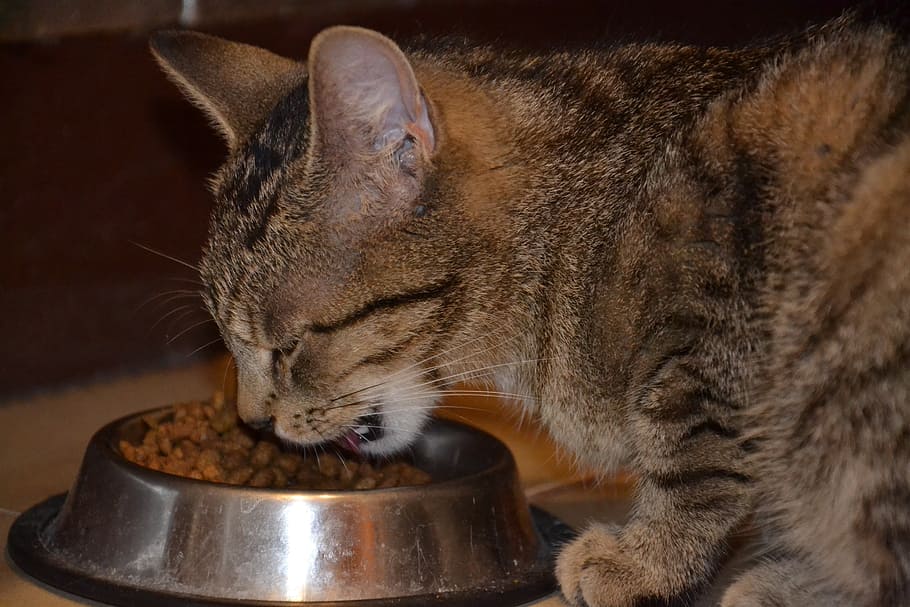
How long can canned cat food sit out covered?
An alternative approach when your feline friend leaves a portion of its meal untouched is to cover the bowl for later. Nevertheless, it’s essential to note that bacterial growth remains a possibility even when the cat food is covered.
What Happens When Food Goes Bad?
Feeding your cat wet food that has been left out for an extended period poses a significant risk due to the ideal conditions it provides for the growth of bacteria and fungi. As the food undergoes spoilage, the chemical composition of its ingredients undergoes changes, creating an optimal breeding ground for these pathogens.
Consider the scenario of leaving food unattended for a day or longer, resulting in visible mildew formation—a substantial proliferation of fungi in the spoiled food medium. Mildew serves as a visible indicator that the food is no longer suitable for consumption. Typically taking about 24 hours to develop (potentially less in warmer conditions), mildew is a tangible sign of spoilage. However, the development of bacteria on rancid, wet food occurs much more rapidly. As these pathogens thrive, they consume the nutrients in the food, alter its chemical composition, and release toxins that remain within the food.
Feeding your cat wet food that has been left out for an extended period essentially introduces these bacteria and toxins into their diet. Depending on the type of pathogen that has developed, your cat may exhibit various symptoms, including lethargy, fever, varying degrees of diarrhea, blood in the stool, nausea, vomiting, and loss of appetite.

If you observe any of these symptoms in your cat, it is imperative to seek prompt veterinary attention. Diarrhea is particularly concerning as it can lead to dehydration, and nausea and vomiting may hinder the cat from rehydrating through normal water intake. In severe cases, subcutaneous or intravenous hydration may be necessary.
Beyond dehydration, infectious gastroenteritis does not resolve on its own. Treatment typically involves the administration of antibiotics to combat the bacteria in the digestive tract, along with a specialized diet to support the cat throughout the recovery process.
Is there a Difference Between Canned wet food and wet food pouches?
How Long Can Wet Cat Food Sit Out ? Whether you’ve opted for wet cat food in a pouch or a can, the practice of leaving it out remains the same. Both varieties of wet cat food should be served fresh and promptly stored away once your cat completes its meal.
The Importance of Freshness
Nourishing your cats with wholesome, fresh meals plays a crucial role in maintaining their well-being. Fresh food not only enhances safety but also appeals more to your cat’s appetite. Just as you wouldn’t find pleasure in snacking on stale bread, your cat, too, prefers to indulge in fresh kibble or recently opened cans of wet cat food rather than consuming expired options.
To help ensure that your cat is eating fresh food, use these quick tips:
Establish a Consistent Feeding Routine: While some pet parents opt for free feeding, adhering to a routine for your cat’s meals ensures that the food remains consistently fresh. Following a schedule also allows you to monitor daily calorie intake, preventing under or overfeeding.
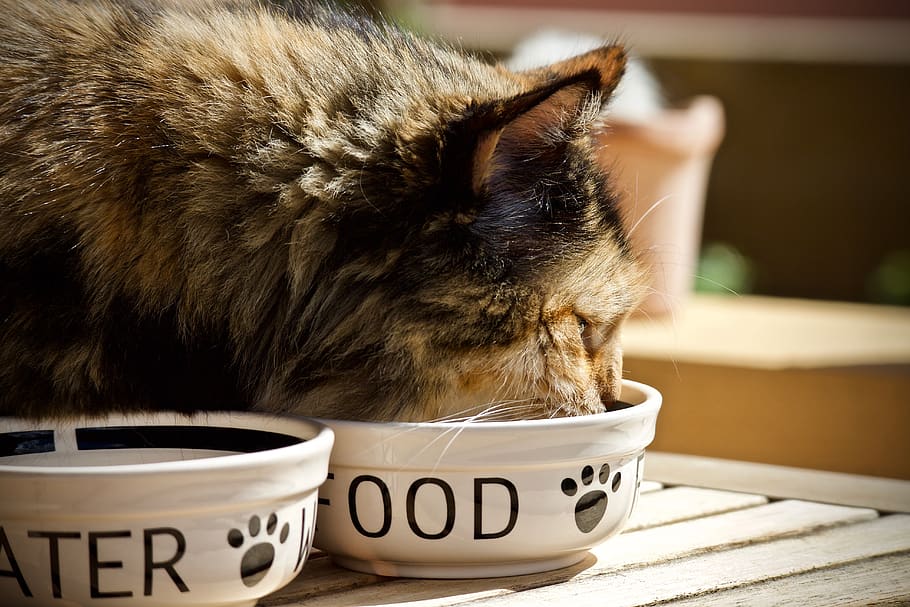
Store Uneaten Food Appropriately: Once your cat completes its meal, promptly store any uneaten food in a sealed container. For dry kibble, a simple cover and storage in a cool, dry place suffice. In the case of wet food, transfer leftovers to a sealed container and store them in the refrigerator for future use.
Adapt to Your Cat’s Preferences: If your cat regularly leaves portions of their wet meal due to a preference for smaller servings, consider opting for smaller package sizes, such as 1.75 or 3oz offerings. This not only accommodates their preferences but also reduces the need to store leftovers.
Explore New Options: Changes in your cat’s eating habits may be linked to flavor or texture preferences. Introduce variety by trying new wet food pouches with different textures or experimenting with a variety pack of canned food featuring diverse flavors.
Consult Your Vet: If you observe any shifts in your cat’s eating behavior, consult your vet to rule out potential underlying health concerns. A veterinarian can provide insights and guidance to address any issues affecting your cat’s meal preferences.
Choose the Right Cat Food: Opt for cat food that is not only nutritious but also delicious. Wellness Pet Food offers a range of natural cat food options, including savory wet food, snacks, and treats. Crafted with premium ingredients, each recipe aims to promote health and wellness. With the Wellness Satisfaction Guarantee, you have the assurance that if your cat is among the rare 1 in 10 who doesn’t love Wellness, you can get your money back or try another recipe from their extensive range of over 70 different wet recipes.

